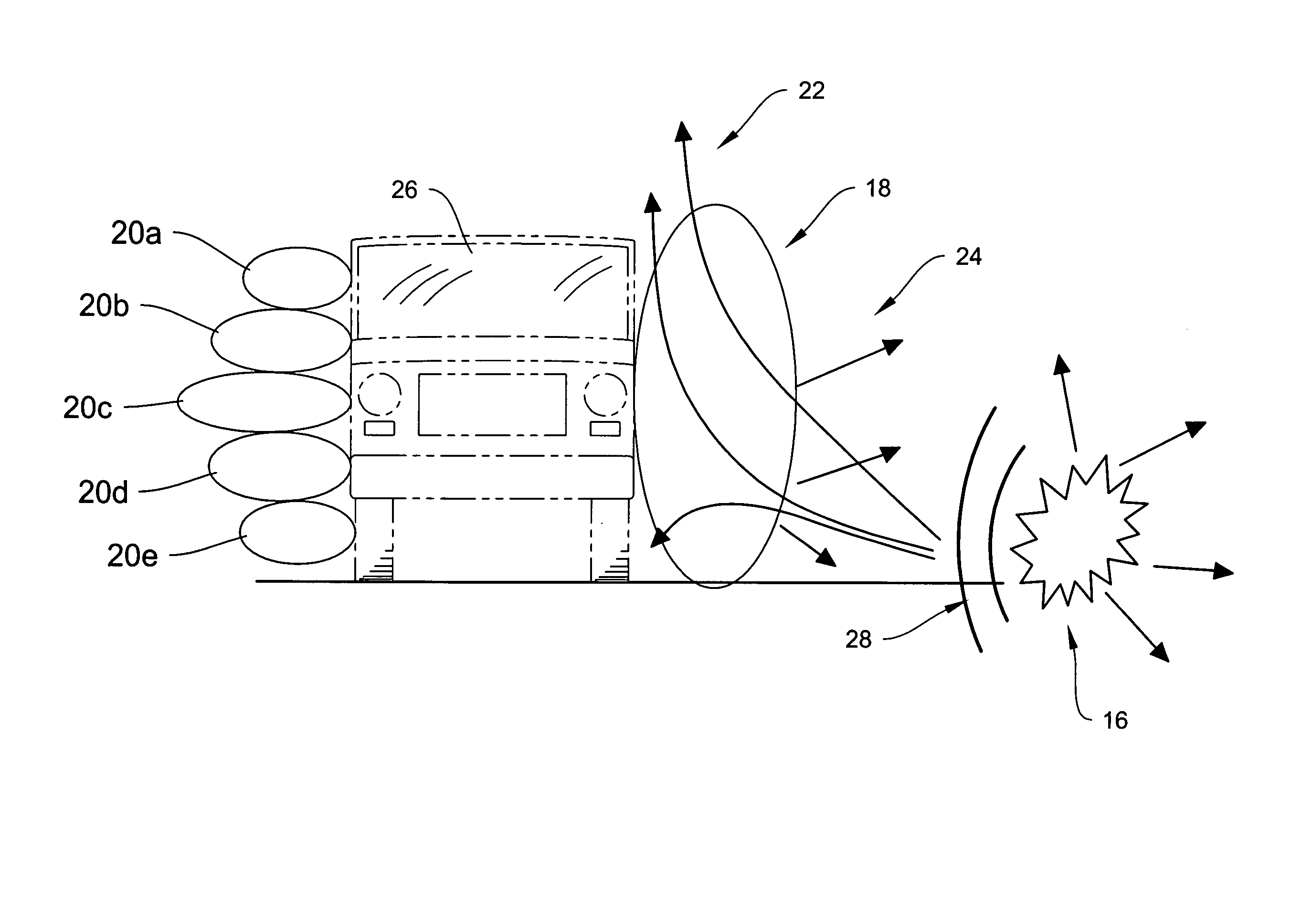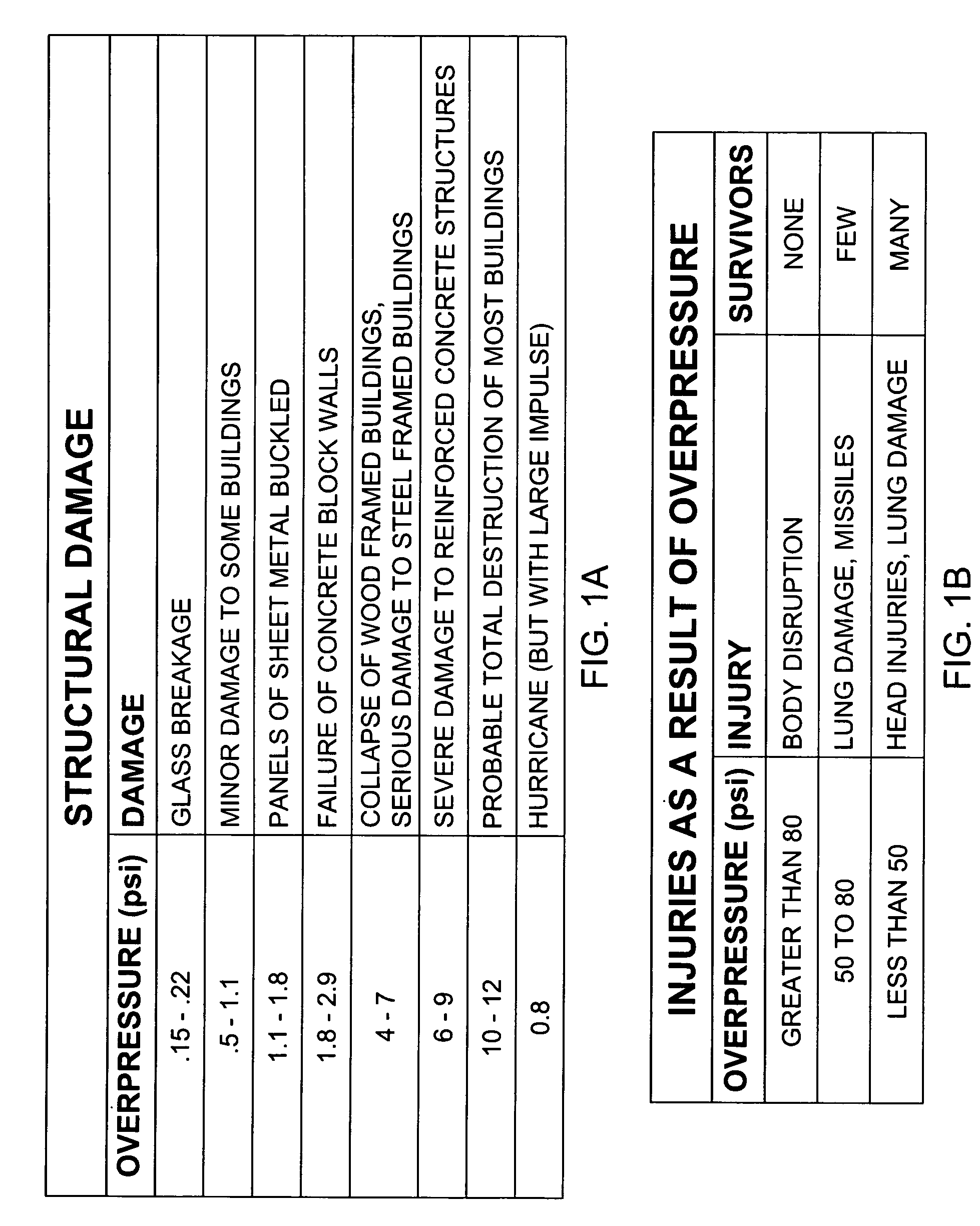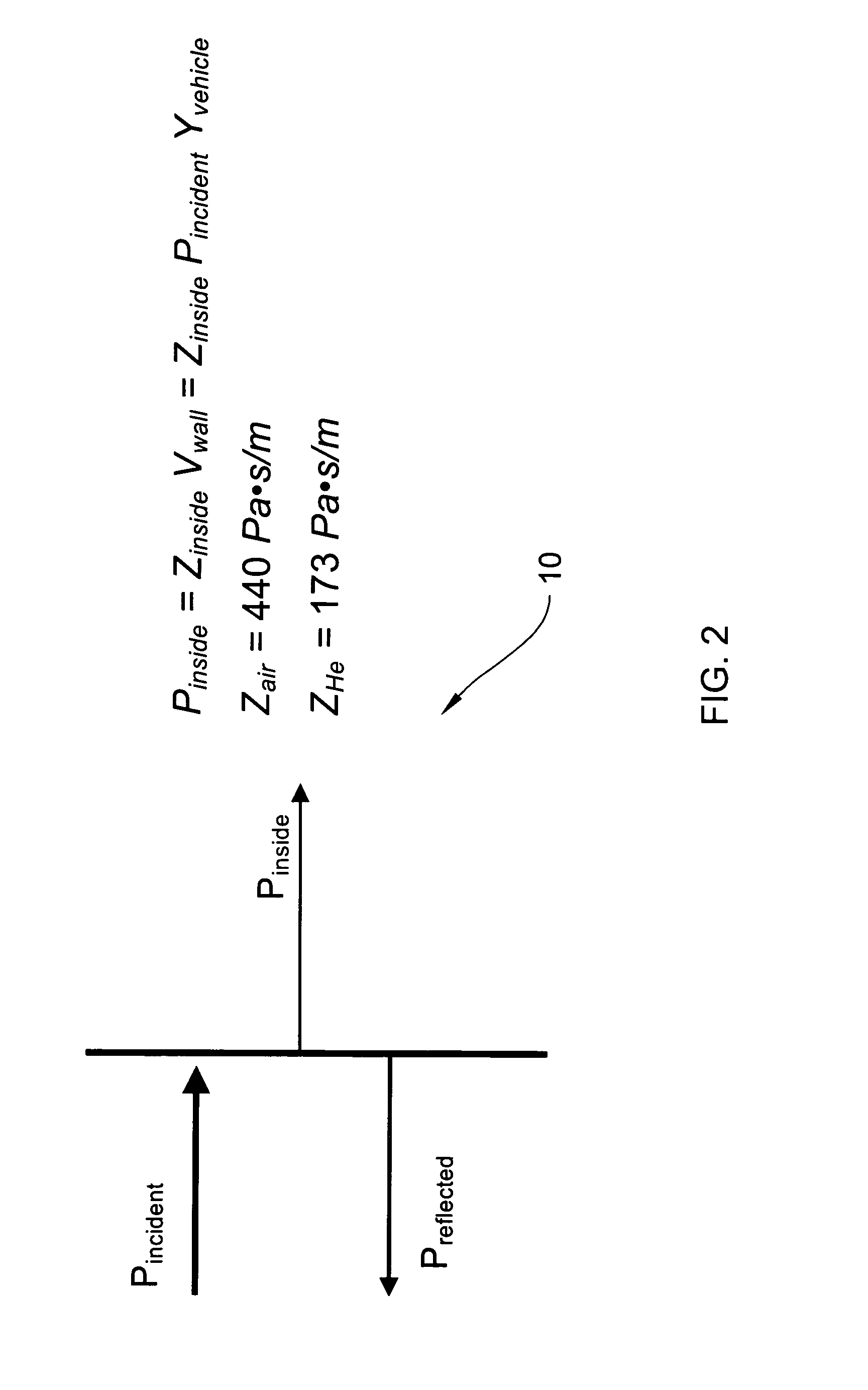Systems and methods for explosive blast wave mitigation
a technology of explosive blast wave and mitigation system, which is applied in the field of mitigation can solve the problems of toxic to humans, all prior art mitigation methods for reducing the damage affecting the damping effect of explosive blast wave, so as to improve the damping effect of shock wav
- Summary
- Abstract
- Description
- Claims
- Application Information
AI Technical Summary
Benefits of technology
Problems solved by technology
Method used
Image
Examples
Embodiment Construction
[0040]As described above in summary, the invention generally relates to mitigating damage done by shock waves caused by an explosion. As such, the invention has particular application to transfer and storage of explosive substances; battle field protection, including personal, vehicle and building; and protection against terrorist attacks. According to various illustrative embodiments, the invention is directed to systems and methods that substantially fill a contained or substantially contained environment with a gas having specific acoustic impedance (Z) less than the specific acoustic impedance of air to reduce peak overpressure within the environment. In other illustrative embodiments, the invention is directed to systems and methods that interpose a low impedance gas lens between an explosion and a target to be protected. In some implementations, the environment gas filling features and the interposed gas lens features are combined into a comprehensive system for mitigating dam...
PUM
 Login to View More
Login to View More Abstract
Description
Claims
Application Information
 Login to View More
Login to View More - R&D
- Intellectual Property
- Life Sciences
- Materials
- Tech Scout
- Unparalleled Data Quality
- Higher Quality Content
- 60% Fewer Hallucinations
Browse by: Latest US Patents, China's latest patents, Technical Efficacy Thesaurus, Application Domain, Technology Topic, Popular Technical Reports.
© 2025 PatSnap. All rights reserved.Legal|Privacy policy|Modern Slavery Act Transparency Statement|Sitemap|About US| Contact US: help@patsnap.com



